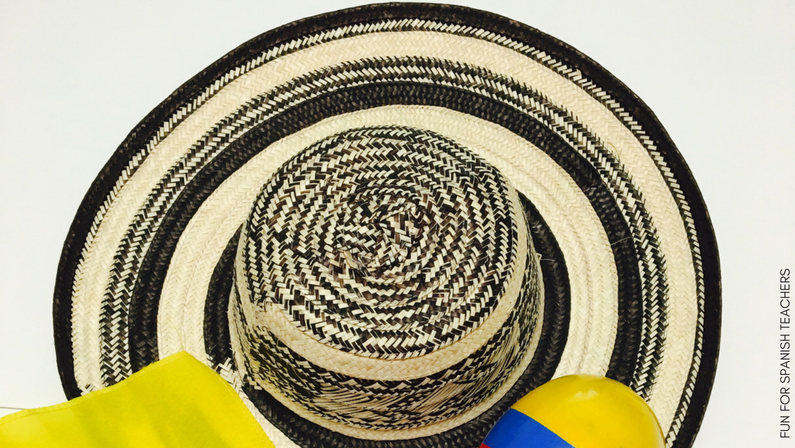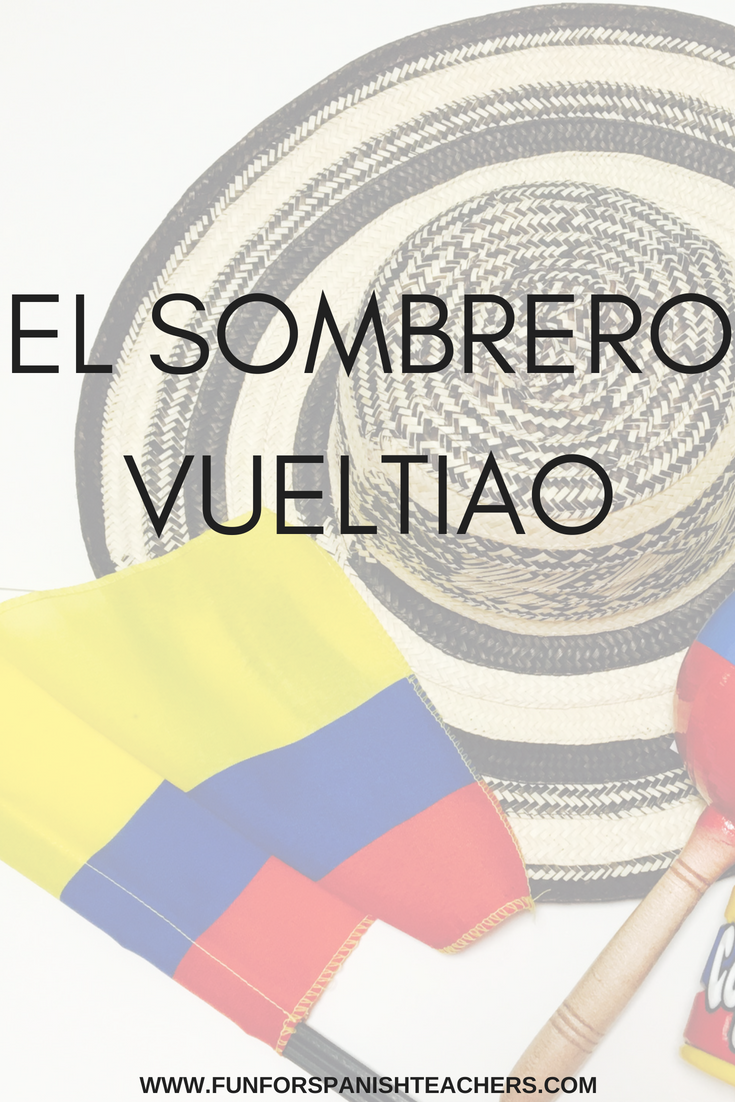Create Your Own Interactive Sock Puppet Book
Have fun!
Have fun!

“El Sombrero Vueltiao is the hat that has come to represent Colombia as a symbol. I feel strongly connected to this symbol because my parents are both from the Atlantic Coast of Colombia, and although I was born and raised in Cali, I was always surrounded by the Sombrero Vueltiao, las abarcas (traditional sandals) and all the flavors from the Coast: suero, pescado seco (dried fish), yuca (cassava), and more. I have memories of listening to Vallenatos everyday at home with my parents who loved to host simple fiestas on Saturdays with some other Costeños and neighbors.
Sombreros are a big part of the rural Colombian culture and the different festivals and carnivals around the country. There is a sombrero for everything, and they all look different. Some of the sombreros are engrained in particular cultures, which is the case of the Guambiano people in the Cauca Department who have a very special bowler hat. This said, not everyone wears sombreros in Colombia, so don’t get disappointed if you ever visit and don’t see any sombreros.
Since the Sombrero Vueltiao has also become an icon in attempts (which has been pretty successful!) to attract tourists, I am sure you will at least see one sombrero and some pictures of it in Colombia.
This video below explains the history of the Sombrero Vueltiao and its meaning for the people from the Atlantic Coast of Colombia.


In our Spanish class, we learned about the butterfly migration traveling from north to south because it was the fall. These are some of the questions we used and might help you start a conversation in class. Having a map and a paper butterfly helps a lot!
¿Dónde vivimos? ¿Vivimos en Colombia o en Estados Unidos?
¿Cuál es la estación? ¿Es el verano? ¿Es el otoño?
¿Qué animal es? ¿Es un perro? ¿Es un gato? ¿Es una mariposa? ¿Es un gato o una mariposa?
¿Qué clase de mariposa es?
¿Por qué van las monarcas al sur?
¿Adónde van las monarcas?
¿Adónde en México van las monarcas?
¿Cuándo van las monarcas a Michoacán?
¿Qué se celebra en México el 1 y 2 de noviembre?
¿Qué representan las monarcas para las personas en Michoacán?
Each student decorated small paper butterflies and wrote basic information such as:
Yo me llamo _________.
Yo tengo ______ años.
Yo vivo en __________.
Mi color favorito es___________.

We also decorated a bigger butterfly the size of a filing folder and added a picture of our class in the middle. We also needed to include a self-addressed, stamped envelope (10” X 13”) in order to get our butterflies in the spring. I uploaded a picture of a big butterfly to the Journey North website and shared it with parents. On the map, we were able to see the schools that were participating in the country, as well our big butterfly.
We also read a story called “Monarca va a Michoacán” to introduce and review high-frequency vocabulary.
We made a connection with the homeroom teachers. During their reading time, students had different books related to butterflies and also to “El Día de los Muertos.” It’s believed that Monarchs are the souls of the departed and loved ones, and they arrive in Michoacán to join the celebration. Students read “Uncle Monarch” in their classrooms, and that helped us make a connection to explore the Day of the Dead celebration.

We also got to say “adiós” to our real butterflies before they embarked on their journey south.
In Spanish class, we read a bilingual book called “El Día de los Muertos.” It led us to make a comparison between Halloween and this beautiful celebration for them to understand the meaning of the Day of the Dead and why it’s important to the Mexican people – and how it differs from Halloween.

When the spring came, we had an awesome surprise! We got mail from Journey North with beautiful paper butterflies made by children in Mexico and other parts of the United States. This was an amazing experience not only for the teachers who got to work together but also for the children who were excited about their paper butterflies. This is also an opportunity to raise awareness about Monarchs and what could happen if they go extinct.

Thinking about joining the journey this year? Click here to visit the link to learn how to participate and download the “Teacher Packet” with all the steps to join the symbolic migration. The deadline to join is around the first week of October, so make sure you don’t miss the date.
Last, but not least, I recorded this song with some friends in 2012 to use in my classes. I am not the best singer but had a lot of fun recording this song.
What a great way to celebrate by sharing this librito with you! Please click on the picture to download your copy!
View this post on Instagram